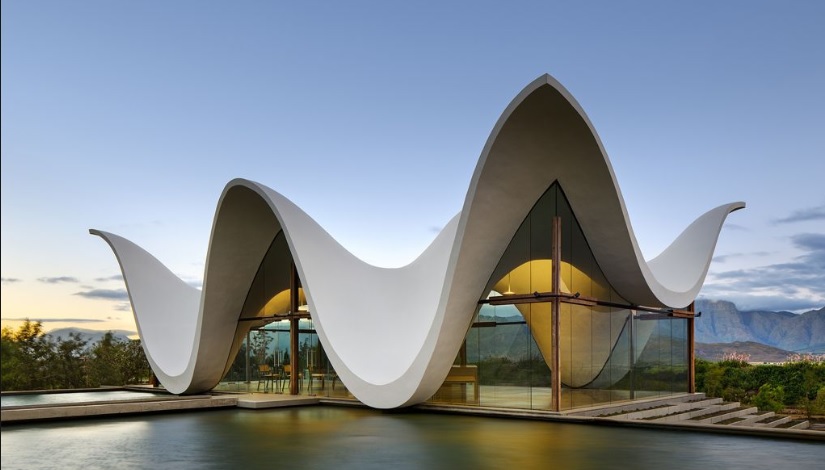From Nigeria to Morocco, a series of world class buildings representing the best of modern architecture are appearing across the continent.

African Architecture seldom gets attention in the building and design press. However, recently across the continent, young national and international talent, as well as the occasional heavy-hitting star architect, are creating innovative and sustainable buildings which offer lessons for architects and developers around the world.

Contemporary African architecture is extremely varied: it ranges from sustainable rural developments to luxury apartments and offices; from schools and hospitals to swanky safari lodges; and from huge infrastructure projects to makeshift improvisations. In all of these styles is a sensitivity to local traditions combined with on-the-ground ingenuity and use of materials.

Outside the continent, bright stars such as Ghanian-British architect David Adjaye and Diebedo Francis Kere, born in Burkina Faso but now based in Berlin are drawing attention to both the innovation in African architecture and its legacy of climate-smart vernacular styles.
David Adjaye set up his first office in 1994, where his ingenious use of materials and his sculptural ability established him as an architect with an artist’s sensibility and vision.

He reformed his studio as Adjaye Associates in 2000 and immediately won several prestigious commissions. He is currently working on a pair of major redevelopment projects in the city – 70-73 Piccadilly (ongoing), a £600 million scheme in the prestigious Piccadilly area; and the Hackney Fashion Hub (ongoing), a masterplan to renew a substantial portion of the Hackney borough. Adjaye Associates’ largest completed project to date is the £160 million Moscow School of Management Skolkovo (2010).
In 2009 a team led by Adjaye was selected to design the new $360 million Smithsonian National Museum of African American History and Culture on the National Mall in Washington DC. The practice is currently working on a condominium development for Four Seasons in Washington DC . Adjaye Associates now has offices in London and New York, with projects throughout the world. These include the Aishti Foundation shopping and cultural complex in Beirut (2015), the Alara concept store in Lagos (2014), and a new headquarters building for the International Finance Corporation in Dakar (ongoing).

The material from Adjaye’s ten-year study of the capital cities of Africa was shown in Urban Africa, an exhibition at the Design Museum, London (2010) and published as African Metropolitan Architecture (New York, 2011, and as Adjaye Africa Architecture, London, 2011).
Diebedo Francis Kere, has emerged as a standard-bearer for African architecture. Francis Kéré is the first African and the seventeenth architect to accept the Serpentine Galleries’ invitation to design this year’s temporary Pavilion in its grounds.

His work in the continent, predominantly in Burkina Faso, is a smart blend of traditional and vernacular construction techniques and materials – mud bricks and corrugated-steel sheets – with contemporary design. His buildings mostly use lightweight steel frames and are designed to be built using local labourers. This practice of capacity building – of developing local skills – is central to Kéré’s mission.
He designed his first building, a primary school for his former home village of Gando, while studying at the Technical University of Berlin. The school, with its roof of vaulted corrugated steel, helped define Kéré’s rural hi-tech style, and was awarded the Aga Khan Award for Architecture in 2004. Even more radical is the Lycée Schorge Secondary School, also in Burkina Faso. It was completed in 2016 and features wind-catching towers and an undulating ceiling of offset plaster and concrete.


Kéré’s most ambitious work, though, is the ongoing Opera Village project in Laongo, which is a mixed-use complex near Burkina Faso’s capital, Ouagadougou. That may be outdone, however, if his masterplan for a new Burkina Faso national assembly and memorial park ever comes to fruition. The country held its first competitive presidential election in 2015, and the new government asked Kéré to create a vision for an assembly building. He unveiled plans at the Venice Architecture Biennale in 2016 for the ziggurat.
The building’s design also includes several green terraces, which will showcase new agricultural methods. The site of the old assembly building, which was all but destroyed in pro-democracy demonstrations, would become a memorial park. Whether it gets built or not, Kéré’s design exemplifies the best of contemporary African architecture, singular but not show-boating, rooted in vernacular styles and responsive to local needs.
Sources: paris-la.com, kere-architecture.com, wired.co.uk, adjaye.com.
